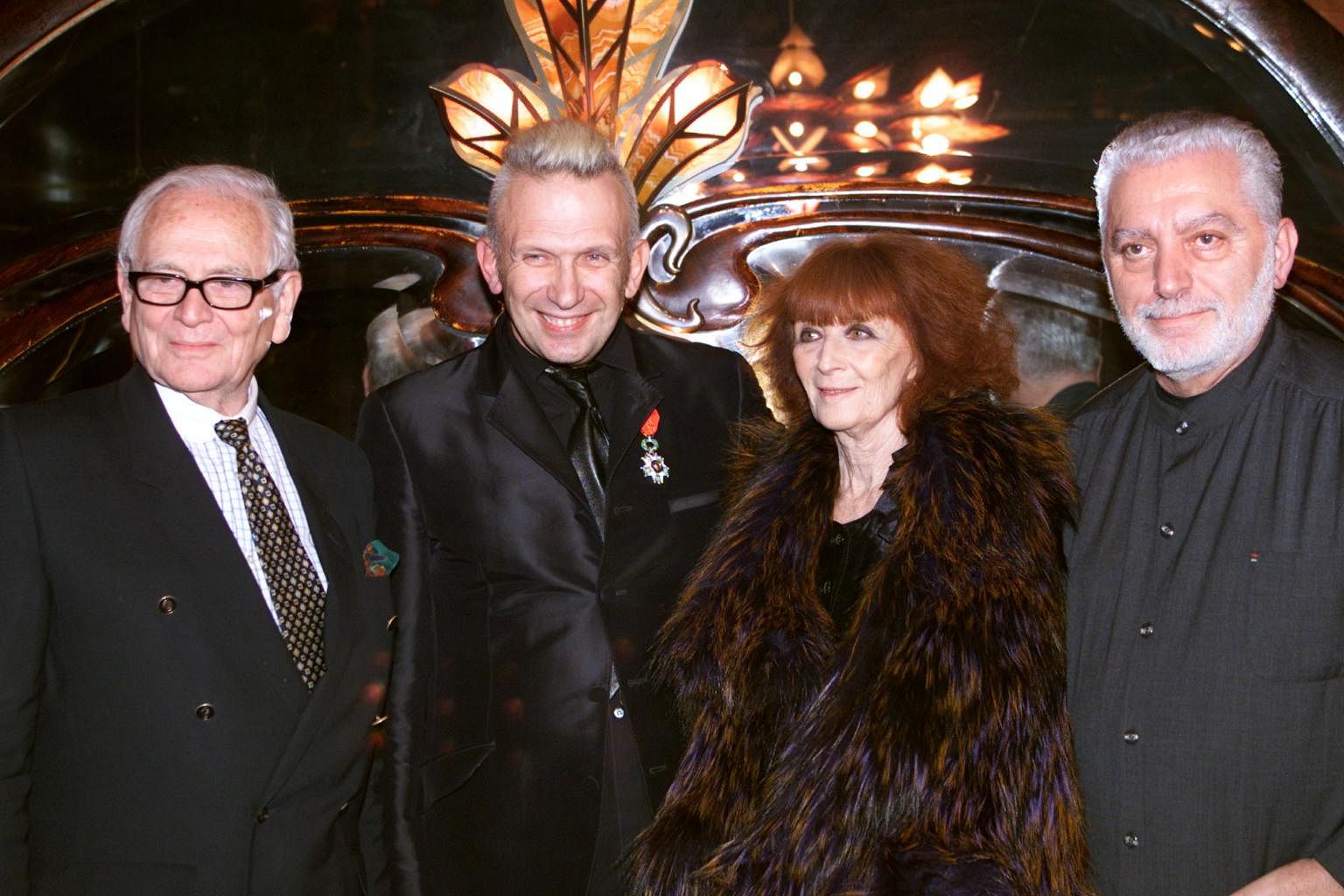Pierre Cardin, the visionary designer who clothed the elite but also transformed the business of fashion, died on Tuesday in Neuilly-sur-Seine, just outside Paris. He was 98. His death, at the American Hospital there, was confirmed Tuesday by the French Academy of Fine Arts. No cause was given.
Here are five ways in which he was ahead of the fashion curve.
1. Licensing pioneer
Fashion is not enough," Pierre Cardin once told Eugenia Sheppard, the American newspaper columnist and fashion critic. "I don't want to be just a designer."
He dressed the famous - artists, political luminaries, tastemakers and members of the haute bourgeoisie - but he was also a licensing pioneer, a merchant to the general public with his name on a cornucopia of products. There were bubble dresses and aviator jumpsuits, fragrances and automobiles, ashtrays and even pickle jars.
He turned France's fashion establishment on its head, reproducing fashions for mass, ready-to-wear consumption and dealing a blow to the elitism that had governed the Parisian couture.
2. Avant-garde designer
In a career of more than three-quarters of a century, Cardin remained a futurist.
He forsook his hard-edge aesthetic for a time in the 1970s, incorporating draped fabrics, pleating, quilting and asymmetrical collars and hems into his designs. His couture collection of 1986 featured entire dresses made from billowing scarves.

As the space age dawned, he dressed men, and women, in spacesuits. In 1969, the United States' National Aeronautics and Space Administration (Nasa) commissioned him to create an interpretation of a spacesuit, a signal inspiration in his later work.
"The dresses I prefer," he said at the time, "are those I invent for a life that does not yet exist."
His designs were influenced by geometric shapes, often rendered in fabrics like silver foil, paper and brightly coloured vinyl.
3. Relentless trendsetter

His first collection for the House of Cardin, established in 1950, featured suits and coats modelled in heavyweight wool with emphatic details and the geometric shapes and cutouts that were to become hallmarks of his collections.
His men's ready-to-wear designs, introduced in 1960, were decidedly more faithful to the body's outlines. Built on narrow shoulders, high armholes and a fitted waist, they were streamlined and somewhat severe, dispensing in some cases with traditional collars in favour of the simple banded Nehru, a namesake adaptation of the style worn by the Indian prime minister. Those suits were slow to catch on in the United States - until the Beatles appeared in knockoff versions on the Ed Sullivan television show in 1966. Nehru-mania ensued.
4. Global expansionist

Cardin had laid the foundations for a global empire by the late 1950s, bringing his designs to Moscow, Tokyo and Beijing. He relished his role as the overseer of a realm that encompassed clothing accessories, furniture, household products and fragrances sold through some 800 licensees in more than 140 countries on five continents.
"I wash with my own soap," he once boasted. "I wear my own perfume, go to bed with my own sheets, have my own food products. I live on me."
In 1981 he bought Maxim's, once the world's most famous restaurant, a landmark of the belle epoque on the Rue Royale in Paris. Two years later, as part of an international expansion, Maxim's opened its first branch in Beijing.
5. Enduring influencer

Cardin, who was a mentor to designers such as Jean Paul Gaultier, was active in fashion circles until the last, still taking young designers under his wing, attending parties and events and regularly visiting his Paris office by Jaguar.
"Thank you Mr Cardin for opening me the doors to fashion and for making my dream possible," Gaultier wrote on Twitter.
Cardin lived to see his fashions reappraised. His collections served as the inspiration for designers like Gareth Pugh, Simon Porte Jacquemus and, to some degree, Karl Lagerfeld at Chanel. That he remained a force in the 21st century was attested to by Lady Gaga, who once wore one of his metallic chain-mail creations on the concert stage.

